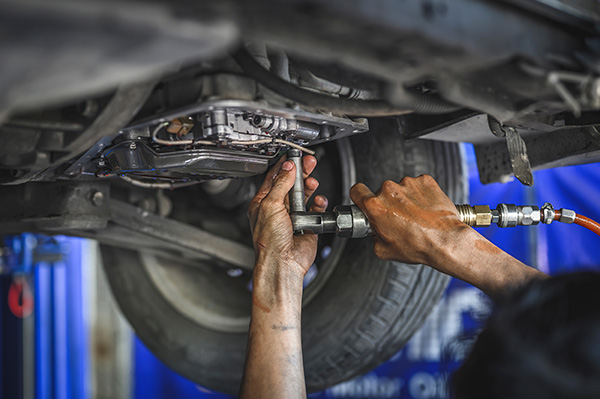
When it comes to car maintenance, most drivers are well-versed in the basics: oil changes, tire rotations, and brake checks. However, the topic of manual transmission fluid often flies under the radar. You might wonder if manual transmissions have fluid that needs maintenance, and the answer is a resounding yes.
While manual transmissions might seem less complex than their automatic counterparts, they still require proper care to ensure longevity and optimal performance. We'll examine the intricacies of manual transmission fluid maintenance and why it's necessary for your vehicle.
Manual Transmission Fluid
First, let's clear up a common misconception. Manual transmissions do indeed have fluid, often referred to as gear oil or transmission oil. This fluid is essential for lubricating the moving parts within the transmission, reducing friction, and preventing wear and tear. It also helps keep the transmission cool by dissipating heat generated during operation. Without adequate lubrication, the metal components would grind against each other, leading to premature failure and costly repairs.
Why Manual Transmission Fluid Maintenance Matters
Regular maintenance of manual transmission fluid is vital for several reasons. Over time, the fluid can become contaminated with metal shavings from the gears, dirt, and other debris. These contaminants can cause increased friction and wear on the transmission components. The fluid can break down and lose its lubricating properties, making it less effective at protecting your transmission.
Ignoring transmission fluid maintenance can lead to a host of problems. You might experience difficulty shifting gears, strange noises, or even transmission failure. By keeping the fluid clean and at the proper level, you ensure smoother operation and extend the life of your transmission.
How Often Should You Change The Fluid?
The frequency of manual transmission fluid changes depends on several factors, including your driving habits, the type of vehicle, and the manufacturer's recommendations. As a general rule of thumb, it's a good idea to check the transmission fluid level and quality every 30,000 to 60,000 miles. However, some high-performance vehicles or those used for heavy-duty purposes may require more frequent changes.
Consult your vehicle's owner's manual for specific recommendations. If you're unsure or notice any signs of trouble, such as grinding gears or difficulty shifting, it's best to have a professional technician inspect the transmission fluid and advise you on the necessary maintenance.
The Transmission Fluid Change Process
Changing the transmission fluid in a manual vehicle requires mechanical know-how and special tools. Here's a simplified overview:
1. Accessing and Draining the Old Fluid
We begin by safely lifting your vehicle and locating the fill and drain plugs on the transmission casing. The technician carefully removes the drain plug using specialized tools to let the old fluid drain out completely.
2. Inspecting the Fluid
Once the old fluid has been drained, the technician inspects it for any signs of contaminants, such as metal shavings or debris. This step is crucial as it can indicate potential issues within the transmission.
3. Flushing the System if Needed
The technician uses specialized transmission fluid flush equipment to ensure all the old fluid and any remaining contaminants are completely removed. This process circulates fresh fluid through the transmission, flushing out the old fluid and debris. This thorough cleaning process ensures that no old fluid remains in the system.
4. Refilling with New Fluid
After the system is emptied or flushed, the technician refills the transmission with the appropriate type and amount of new fluid, as specified by your vehicle's manufacturer. This step is critical to ensure the longevity and proper functioning of the transmission.
5. Checking for Leaks and Proper Fluid Level
Finally, the technician replaces the drain and fill plugs securely, checks for any leaks, and ensures the fluid level is correct. This comprehensive process guarantees that your transmission is properly maintained and running smoothly.
Attempting a transmission fluid replacement or flush on your own can be risky and might lead to improper maintenance. It's always best to have this procedure done by professionals who have the expertise, tools, and equipment necessary to perform the job correctly and safely.
Is your car showing signs of transmission trouble? Visit Foreign Auto Services for expert diagnosis and maintenance services.